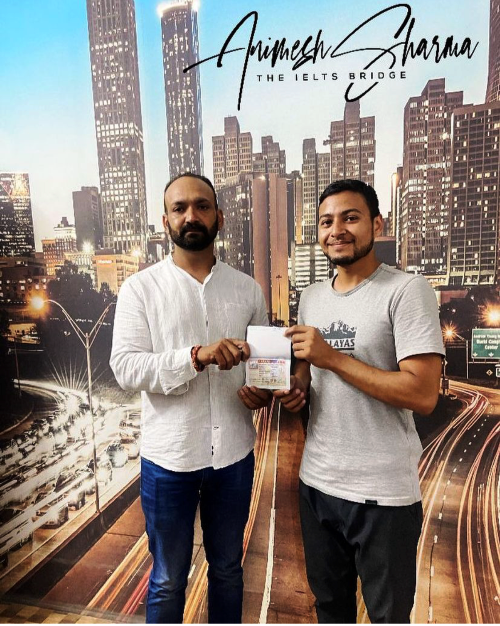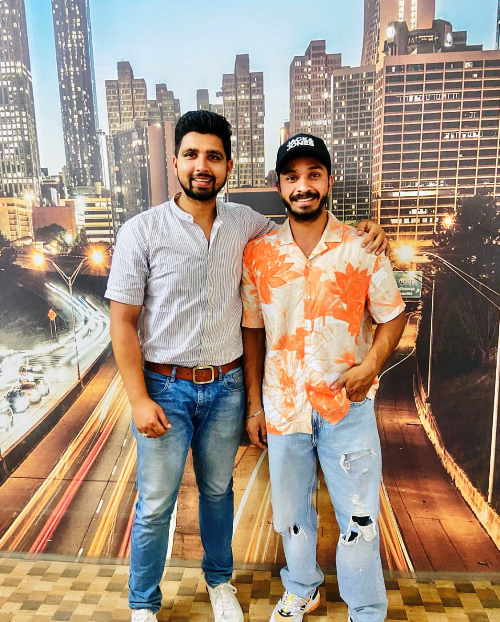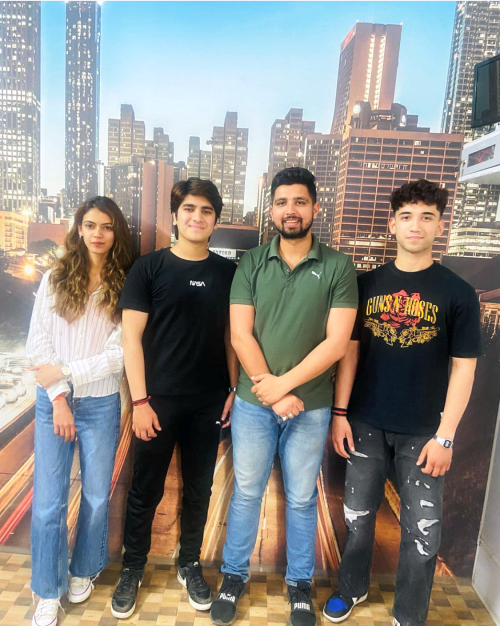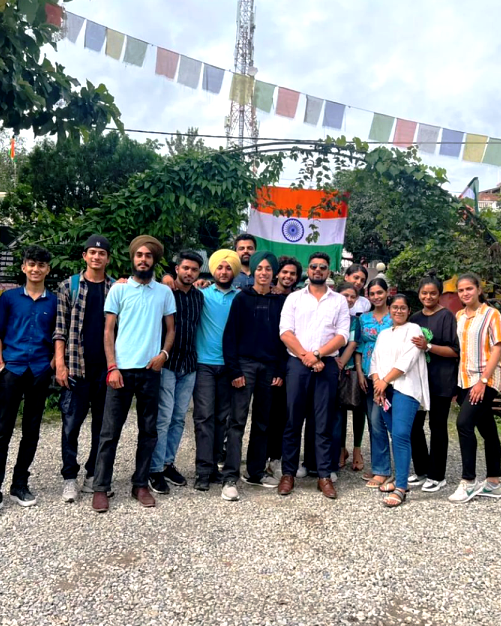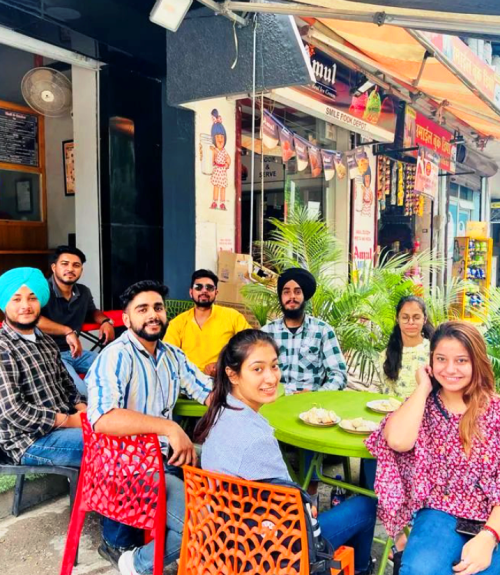Reading Passage 1: Ant Intelligence
Questions 1-6: TRUE, FALSE, NOT GIVEN
[In this type of question, candidates are asked to find out whether:
The statement in the question matches with the account in the text- TRUE
The statement in the question contradicts the account in the text- FALSE
The statement in the question has no clear connection with the account in the text- NOT GIVEN
[For this type of question, you can divide each statement into three independent pieces and make your way through with the answer.]
Question 1: Ants use the same channels of communication as humans do.
Keywords for the question: ants use, same channels of communication, as humans,
At the beginning of paragraph no. 2 the writer says, “Ant store food, repel attackers and use chemical signals to contact one another in case of attack. Such chemical communication can be compared to the human use of visual and auditory channels (as in religious chants, advertising images and jingles, political slogans and martial music) to arouse and propagate moods and attitudes.”
This means ants use chemical signals while humans use visual and auditory channels which are not similar but they can be compared.
So, the answer is: FALSE
Question 2: City life is one factor that encourages the development of intelligence.
Keywords for the question: city life, factor, encourages, development of intelligence,
In paragraph no. 7, the writer mentions about the impact of city life in developing intelligence, “Whereas prehistoric man had no exposure to urban lifestyles – the forcing house of intelligence – the evidence suggests that ants have lived in urban settings for close on a hundred million years … . . . .”
Here, urban lifestyles = city life, the forcing house = factor that encourages the development,
So, the answer is: TRUE
Question 3: Ants can build large cities more quickly than humans do.
Keywords for the question: ants, can build, large cities, more quickly, than humans,
In paragraphs no. 7 and 8, the author talks about building cities by ants and humans. However, there is no comparison on whether ants build large cities more quickly than humans or not.
So, the answer is: NOT GIVEN
Question 4: Some ants can find their way by making calculations based on distance and position.
Keywords for the question: some ants, find, way, making calculations, based on, distance, position,
In paragraph no. 11, the author mentions in lines 1-6, “Research conducted at Oxford, Sussex and Zurich Universities has shown that when desert ants return from a foraging trip, they navigate by integrating bearings and distances, which they continuously update in their heads.”
Here, navigate = find their way, integrating = assimilate/making calculations, bearings and distances = distance and position,
So, the answer is: TRUE
Question 5: In one experiment, foraging teams were able to use their sense of smell to find food.
Keywords for the question: one experiment, foraging teams, able to use, sense of smell, find food,
In paragraph no. 12, we can find the mention of ‘the experiment’. Here, in lines 11-12, the writer mentions, “. . . Elaborate precautions were taken to prevent the foraging team using odour clues.”
The line suggests that necessary actions were taken before to stop the foraging team to use odour (sense of smell).
So, the answer is: FALSE
Question 6: The essay, ‘In the company of ants’, explores ant communication.
Keywords for the question: essay, In the company of ants, explores, ant communication,
The last paragraph gives reference to the essay ‘In the company of ants’. The writer says here, in lines 5-9, “It’s no surprise that Edward Wilson, in his essay, ‘In the company of ants’, advises readers who ask what to do with the ants in their kitchen to: ‘Watch where you step. Be careful of little lives.’”
Here, the writer of the essay ‘In the company of ants’ advises us to be careful and not to step on the little creatures. However, the line doesn’t indicate anything about the subject of the essay.
So, the answer is: NOT GIVEN
Questions 7-13: (Summary completion with list of words)
(In this kind of questions candidates are given a summary for one, two or three paragraphs with some fill in the blanks questions form a list of words given in a box. Candidates need to find out the related paragraphs by correctly studying the keywords form the questions. Then, they should follow the steps of finding answers for fill in the gaps and write the correct letter corresponding to the answer.)
The title of the summary: Ants as farmers
All the answers are found in paragraph D.
Question 7: Ants have sophisticated methods of farming, including herding livestock and growing crops, which are in many ways similar to those used in human agriculture. The ants cultivate a large number of different species of edible fungi which convert ________ into a form which they can digest.
Keywords for the question: sophisticated methods of farming, herding livestock, growing crops, similar, human agriculture, cultivate, large number, different species, edible fungi, convert, can digest,
In paragraph no. 5, the author states in lines 2-6, “Ants can’t digest the cellulose in leaves- but some fungi can. The ants, therefore, cultivate these fungi in their nests, bringing them leaves to feed on, and then use them as a source of food.”
So, the answer is: C (cellulose)
Questions 8 and 9: They use their own natural 8. ___________ as weed-killers and also use unwanted materials as 9. _________.
Keywords for the question: use, own, natural, weed-killers, unwanted materials,
Again, in paragraph no. 5, in lines 6-9, the author says, “ . .. Farmer ants secrete antibiotics to control other fungi that might act as ‘weeds’, and spread waste to fertilise the crop.”
Here, to control other fungi that might act as ‘weeds’ means weed killers, unwanted materials = waste,
Now, the word ‘use’ before question no. 8 and the word ‘spread’ before question no. 9 restrict us to use the word ‘secrete’ and ‘fertilise’, because they don’t fit here grammatically.
So, the answers are:
- M (secretions)
- F (fertilizers)
Question 10: Genetic analysis shows they constantly upgrade these fungi by developing new species and by ________ species with neighbouring ant colonies.
Keywords for the question: genetic analysis, constantly upgrade, fungi, developing, new species, neighbouring ant colonies,
In paragraph no. 6 line no. 6 we find the word ‘genetically’ that matches with keywords ‘genetic analysis’. So, we need to scan this paragraph carefully.
In lines 7-13, the writer says, “. . . . These turned out to be highly diverse: it seems that ants are continually domesticating new species. Even more impressively, DNA analysis of the fungi suggests that the ants improve or modify the fungi by regularly swapping and sharing strains with neighbouring ant colonies.”
Here, upgrade = improve or modify, exchange = swapping and sharing,
So, the answer is: D (exchanging)
Questions 11, 12 & 13: In fact, the farming methods of ants could be said to be more advanced than human agribusiness, since they use 11. ________ methods, they do not affect the 12. _______ and do not waste 13. ________.
Keywords for the question: farming methods of ants, more advance than, human agribusiness, they use, methods, do not affect, do not waste,
These questions give a clear hint to the comparison of farming methods between humans and ants. So, we need to go to paragraph no. 4, where the comparison of farming methods between humans and ants can be found. In lines 1-4 of this paragraph, the writer says, “The farming methods of ants are at least sustainable. They do not ruin environments or use enormous amounts of energy.”
Here, The farming methods of ants are least sustainable = they use sustainable farming methods, do not ruin = do not affect/do not waste,
So, the answers are:
- N (sustainable)
- O (environment)
- E (energy)
Reading Passage 2: Population movements and genetics
Questions 14-19 (List of headings):
[In this question type, IELTS candidates are provided with a list of headings, usually identified with lower-case Roman numerals (i, ii, iii, etc,). A heading will refer to the main idea of the paragraph or section of the text. Candidates must find out the equivalent heading to the correct paragraphs or sections, which are marked with alphabets A, B, C and so forth. Candidates need to write the appropriate Roman numerals in the boxes on their answer sheets. There will always be two or three more headings than there are paragraphs or sections. So, some of the headings will not be used. It is also likely that some paragraphs or sections may not be included in the task. Generally, the first paragraph is an example paragraph that will be done for the candidates for their understanding of the task.
TIPS: Skimming is the best reading technique. You need not understand every word here. Just try to gather the gist of the sentences. That’s all. Read quickly and don’t stop until you finish each sentence. ]
Question 14: Section A
We should quickly read the whole paragraph because it is a very short one.
The first sentence deals with how the study of human population movements was in the past (based on archaeological and fossil evidence).
Then in lines 4-7, the writer mentions, “A number of techniques developed since the 1950s, however, have placed the study of these subjects on a sounder and more objective footing.”
After that in lines 8-11, the writer mentions how the study of human population movements is done in the present time using genetic material.
So, the answer is: iv (Developments in the methods used to study early population movements)
Question 15: Section B
Section B raises some questions about migration to America and they are found in the middle of the section.
In lines 8-12 the author asks, “… .. . But was there one major wave of migration across the Bering Strait into the Americas, or several? And when did this event, or events, take place?”
So, the answer is: vii (Long-standing questions about prehistoric migration to America)
Question 16: Section C
Have a look at the first and last few lines of section C.
In lines 1-6 the writer mentions, “An important project, led by the biological anthropologist Robert Williams, focused on the variants (called Gm allotypes) of one particular protein -immunoglobin G – found in the fluid portion of human blood. .”
Then in lines 11-16 the writer mentions, “ . . . . . Thus, by comparing the Gm allotypes of two different populations (e.g. two Indian tribes), one can establish their genetic ‘distance’, which itself can be calibrated to give an indication of the length of time since these populations last interbred.”
Here, blood-variants = the variants found in human blood, measure corresponds to = give an indication of the length of, closeness of the relationship = interbred,
So, the lines suggest that the project was an analysis of blood variants and it measures the distance (closeness) of the link between different populations.
So, the answer is: x (How analysis of blood-variants measures the closeness of the relationship between different populations)
Question 17: Section D
Section D shows the outcomes of the project by Robert Williams and his colleagues.
In the first lines the writer says, “Williams and his colleagues sampled the blood of over 5,000 American Indians in western North America during a twenty-year period.”
Then in lines 4-7 the writer mentions, “ .. . . They found that their Gm allotypes could be divided into two groups, one of which also corresponded to the genetic typing of Central and South American Indians. Other tests showed that the Inuit (or Eskimo) and Aleut3 formed a third group.”
Therefore, we can guess that section D talks about the results of the research into blood-variants.
So, the answer is: i (The results of the research into blood-variants)
Question 18: Section E
In section E, the first lines say, “How far does other research support these conclusions?”
The lines suggest that other research has been done on blood-variants.
Then, in lines 2-9, the writer says, “ . .. Geneticist Douglas Wallace has studied mitochondrial DNA4 in blood samples from three widely separated Native American groups: Pima-Papago Indians in Arizona, Maya Indians on the Yucatán peninsula, Mexico, and Ticuna Indians in the Upper Amazon region of Brazil.”
These lines mean that Douglas Wallace is a scientist who works with genes and other genetic matters. He has studied the DNA in blood samples of three groups of people; Pima-Papago, Maya Indians and Ticuna Indians.
So, the answer is: vi (Further genetic evidence relating to the three-wave theory)
Question 19: Section F
Section F opens with these lines, “There are two other kinds of research that have thrown some light on the origins of the Native American population; they involve the study of teeth and of languages.”
Then, in the next few lines we find words like teeth, tooth crown and roots, single-rooted, triple-rooted etc.
So, the answer is: ii (Dental evidence)
Questions 20 and 21: (Completing Table)
(In this type of question candidates need to fill in the gaps in a table. For this table candidates need to write the letter that corresponds to the correct migration routes out of six routes.)
These questions are related to Robert Williams’ research results which can be traced in Section D.
Question 20: Route _____________
Keywords for the question: 15,000 or more, years ago,
In section D, the author says in lines 10-16, “ .. . . From this evidence, it was deduced that there had been three major waves of migration across the Bering Strait. The first, Paleo-lndian, wave more than 15,000 years ago was ancestral to all Central and South American Indians.”
Now, if we look closely at the given picture, we can find out that only route E (marked with red arrows) starts somewhere from Asia, crossing the Bering Strait and then continues to Central and South America.
So, the answer is: E
Question 21: Route _____________
Keywords for the question: 600 to 700, years ago,
In section D, the author says in lines 16-21, “ . .. . The second wave, about 14,000-12,000 years ago, brought Na-Dene hunters, ancestors of the Navajo and Apache (who only migrated south from Canada about 600 or 700 years ago).”
Again, if we look closely at the given picture, we can find out that route C (marked with pink arrows) starts from Asia, crossing the Bering Strait and then stops in South Canada (first period – 14,000-12,000 years ago). Then, in the second period (600 to 700 years ago) they took route D (marked with blue arrows) to the south from Canada.
So, the answer is: D
Questions 22-25 (Classifying groups)
[This type of question asks candidates to classify information from the given reading text. Candidates are given some groups from the text, and a list of options, which are listed as A, B, C etc. They must match the correct groups with the correct options.
N.B.: This question doesn’t follow any sequence. So, they should be answered after all other questions in the passage.]
Question 22: Name of group: Inuit Wave number: ________
Keywords for this question: Inuit,
Take a close look at section D, where we find the reference of the three waves for the first time. Here, in the last lines, the writer says, “ . . . The third wave, perhaps 10,000 or 9,000 years ago, saw the migration from North-east Asia of groups ancestral to the modern Eskimo and Aleut.”
So, the group name is Eskimo and Aleut. But, Eskimo and Aleut is not an option in the question.
What should we do now?
In section D, take a look at lines 8-10, “… .. . Other tests showed that the Inuit (or Eskimo) and Aleut3 formed a third group.”
Therefore, Eskimo means Inuit.
So, the answer is: C (the third wave)
Question 23: Name of group: Apache Wave number: ________
Keywords for this question: Apache,
Again, in section D, the author writes in lines 16-21, “ . .. The second wave, about 14,000-12,000 years ago, brought Na-Dene hunters, ancestors of the Navajo and Apache (who only migrated south from Canada about 600 or 700 years ago).”
So, the answer is: B (the second wave)
Question 24: Name of group: Pima-Papago Wave number: ________
Keywords for this question: Pima-Papago,
Question 25: Name of group: Ticuna Wave number: ________
Keywords for this question: Ticuna,
First, take a look at lines 13-16 in section D, “.. . .. The first, Paleo-lndian, wave more than 15,000 years ago was ancestral to all Central and South American Indians.”
This means Paleo-Indians were originated from the first wave (A).
Now, in section E, read lines 2-13, the writer explains the Paleo-Indian group, “Geneticist Douglas Wallace has studied mitochondrial DNA4 in blood samples from three widely separated Native American groups: Pima-Papago Indians in Arizona, Maya Indians on the Yucatán peninsula, Mexico, and Ticuna Indians in the Upper Amazon region of Brazil. As would have been predicted by Robert Williams’ work, all three groups appear to be descended from the same ancestral (Paleo-lndian) population.”
These lines suggest that Pima-Papago Indians, Maya Indians and Ticuna Indians are all descendants of Paleo-Indian population.
So, the answers are:
- A (the first wave)
- A (the first wave)
Question 26: Multiple choice questions
[This type of question asks you to choose a suitable answer from the options using the knowledge you gained from the passage. Generally, this question is found as the last question so you should not worry much about it. Finding all the answers to previous questions gives you a good idea about the title.]
Question 26: Christy Turner’s research involved the examination of –
Keywords for this question: Christy Turner’s research, examination of,
We find the reference of Christy Turner’s research in section F.
Here, in lines 10-14, the writer says, “ . . . Studies carried out by Turner of many thousands of New and Old World specimens, both ancient and modern, . .. . .. .”
Therefore, it can be understood from these lines that Christy Turner’s research involved the examination of teeth from both ancient (prehistoric) and modern Americans and Asians.
So, the answer is: A (teeth from both prehistoric and modern Americans and Asians)
Reading Passage 3: Saving European forests
Questions 27-33: TRUE, FALSE, NOT GIVEN
[In this type of question, candidates are asked to find out whether:
The statement in the question agrees with the information in the passage – TRUEThe statement in the question contradicts the information in the passage – FALSEIf there is no information on this – NOT GIVEN
For this type of question, you can divide each statement into three independent pieces and make your way through with the answer.]
Question 27: Forest problems of Mediterranean countries are to be discussed at the next meeting of experts.
Keywords for this question: forest problems, Mediterranean countries, to be discussed, next meeting of experts,
The reference of the Mediterranean countries is found in the last lines of paragraph no. 1. Let’s read the line, “Those confined to particular geographical areas, such as countries bordering the Mediterranean or the Nordic countries therefore had to be discarded. However, this does not mean that in future they will be ignored.”
These lines suggest that the first two meetings of experts had no chance to discuss the problems of the Mediterranean or the Nordic countries. However, they are hopeful that they might discuss it in the future but they are not sure when exactly that is going to happen.
So, the answer is: NOT GIVEN
Question 28: Problems in Nordic countries were excluded because they are outside the European Economic Community.
Keywords for this question: problems, Nordic countries, excluded, because, outside, European Economic Community,
Take a look at paragraph no. 1, lines 16-19 where the writer states, “ . .. . Their initial task was to decide which of the many forest problems of concern to Europe involved the largest number of countries and might be the subject of joint action. Those confined to particular geographical areas, such as countries bordering the Mediterranean or the Nordic countries, therefore, had to be discarded.”
This means the reason is to involve countries of Europe that involved largest number of countries and share the same issue. So, the action can be linked easily. The reason is not that Nordic countries are outside the European Economic Community.
Here, excluded = discarded,
So, the answer is: FALSE
Question 29: Forests are a renewable source of raw material.
Keywords for this question: forests, renewable source, raw material,
Take a look at paragraph no. 2, line no. 4-5 where the writer states, “.. . .. At the same time, forests provide raw materials for human activities through their constantly renewed production of wood.”
Here, the lines clearly and easily match the question.
So, the answer is: TRUE
Question 30: The biological functions of forests were recognised only in the twentieth century.
Keywords for this question: biological functions, forests, recognised, only, twentieth century,
Paragraph no. 2 starts with this line, “As a whole, European countries see forests as performing a triple function: biological, economic and recreational.”
Then the author goes on to explain the time of recognising the functions in lines 8-10, “ . .. . The economic importance of forests has been understood since the dawn of man – wood was the first fuel. The other aspects have been recognised only for a few centuries. . . . .”
Here, other aspects = biological and recreational aspects of forests,
This means the biological functions of forests were recognised for a few centuries, not in the twentieth century only.
So, the answer is: FALSE
Question 31: Natural forests still exist in parts of Europe.
Keywords for this question: natural forests, still, exist, parts of Europe,
The answer can be traced at the beginning of paragraph no. 3. The writer says here, “The myth of the ‘natural’ forest has survived, yet there are effectively no remaining ‘primary’ forests in Europe. All European forests are artificial. . . .. ”
Here, myth = falsehood, primary forests = natural forests, artificial = not natural,
This means there are no primary or natural forests in Europe. All of them are artificial.
So, the answer is: FALSE
Question 32: Forest policy should be limited by national boundaries.
Keywords for this question: forest policy, should be limited, national boundaries,
In paragraph no. 3, the writer explains in lines 3-4, “ . . . This means that a forest policy is vital, that it must transcend national frontiers and generations of people, . .. .”
Here, transcend = rise above / go beyond, national frontiers = national boundaries,
The lines indicate that forest policy should not be limited by national frontiers or boundaries; it must transcend national boundaries.
So, the answer is: FALSE
Question 33: The Strasbourg conference decided that a forest policy must allow for the possibility of change.
Keywords for this question: Strasbourg conference, decided, forest policy, must allow, possibility of change,
In paragraph no. 3, the writer explains, “. . . . a forest policy is vital, that it must transcend national frontiers and generations of people, and that it must allow for the inevitable changes that take place in the forests, in needs, and hence in policy. The Strasbourg conference was one of the first events on such a scale to reach this conclusion.”
Therefore, the Strasbourg conference decided/ reached the conclusion that a forest policy must allow for the inevitable changes (the possibility of change).
So, the answer is: TRUE
Questions 34-39: (Matching statements with appropriate information)
[In this type of question candidates are asked to match some statements with some information given from the passage. This type of question generally appears in passage 3. These questions will not follow any sequential order. So, skimming first for the keywords and then scanning to match the information is the best option to find answers to these questions.]
All the answers will be in the last paragraph because this paragraph talks about all the six resolutions.
Question 34: Resolution 1
Keywords for this question: Resolution 1,
In the first line, the writer introduces the resolutions, “That general declaration was accompanied by six detailed resolutions to assist national policymaking.”
Then, in the next lines, the writer says, “ .. . The first proposes the extension and systematisation of surveillance sites to monitor forest decline.” Then in the next few lines, the author describes how forests are declining fast without proper monitoring.
Here, the extension and systematisation of surveillance sites = information is to be systematically gathered, forest decline = decline in the condition of forests,
So, the answer is: J (Information is to be systematically gathered on any decline in the condition of forests.)
Question 35: Resolution 2
Keywords for this question: Resolution 2,
In lines 10-12 of paragraph no. 4, the writer says, “ . . . The second resolution concentrates on the need to preserve the genetic diversity of European forests. The aim is to reverse the decline in the number of tree species or at least to preserve the ‘genetic material’ of all of them.”
The lines suggest that the genetic material of all kinds of tree species need to be preserved.
So, the answer is: A (All kinds of species of trees should be preserved.)
Question 36: Resolution 3
Keywords for this question: Resolution 3,
We find the mention of Resolution 3 in lines 11-15 which deals with forest fires, “ .. .. . Although forest fires do not affect all of Europe to the same extent, the amount of damage caused the experts to propose as the third resolution that the Strasbourg conference consider the establishment of a European databank on the subject. All information used in the development of national preventative policies would become generally available.”
Here, establishment of a European databank = information on forest fires should be preserved, all information . . . .would become generally available = all information should be shared,
So, the answer is: E (Information on forest fires should be collected and shared.)
Question 37: Resolution 4
Keywords for this question: Resolution 4,
In lines 15-19, the author talks about the fourth resolution on mountain forests, “ . .. .. The subject of the fourth resolution discussed by the ministers was mountain forests. In Europe, it is undoubtedly the mountain ecosystem which has changed most rapidly and is most at risk. A thinly scattered permanent population and development of leisure activities, particularly skiing, have resulted in significant long-term changes to the local ecosystems. Proposed developments include a preferential research program on mountain forests.”
So, the answer is: B (Fragile mountain forests should be given priority in research programs.)
Question 38: Resolution 5
Keywords for this question: Resolution 5,
Lines 19-21 talk about the fifth resolution that discusses research into tree diseases, “ . . .. The fifth resolution relaunched the European research network on the physiology of trees, called Eurosilva. Eurosilva should support joint European research on tree diseases and their physiological and biochemical aspects.”
Therefore, the statement indicates that necessary resources should be allocated to research into tree diseases and their physiological and biochemical matters.
So, the answer is: G (Resources should be allocated to research into tree diseases.)
Question 39: Resolution 6
Keywords for this question: Resolution 6,
Lines 23-25 of paragraph no. 4 says, “ . . . . Finally, the conference established the framework for a European research network on forest ecosystems. This would also involve harmonising activities in individual countries as well as identifying a number of priority research topics relating to the protection of forests.”
Here, harmonising = co-ordinating,
The lines indicate that a research network is a much better way if harmonized or co-ordinated throughout Europe.
So, the answer is: D (Research is to be better co-ordinated throughout Europe.)
Question 40: Multiple choice questions (Identifying the main purpose/aim of the passage)
[This type of question asks you to choose a suitable answer from the options that shows the main aim/purpose using the knowledge you gained from the passage. Generally, this question is found as the last question so you should not worry much about it. Finding all the answers to previous questions gives you a good idea about the title.]
What is the best title for Reading Passage 3?
Keywords for this question: best title, Reading Passage 3,
If we closely look at the main ideas for all four paragraphs, we can find out the followings:
Paragraph no. 1 deals with the need for new policies by European nations to save their forests.
Paragraph no. 2 talks about the main work or function of forests.
Paragraph no. 3 describes the importance of policies that are coordinated.
Paragraph no. 4 talks about the six resolutions proposed in the Strasbourg conference to protect European forests.
Therefore, we can come to the conclusion that the purpose or aim of the passage is to provide plans to protect European forests.
So, the answer is: B (Plans to protect the forests of Europe)




